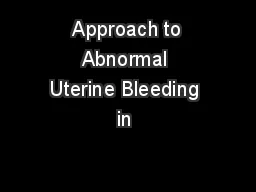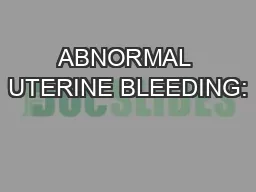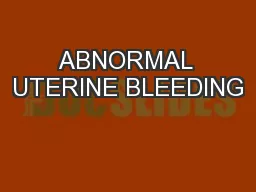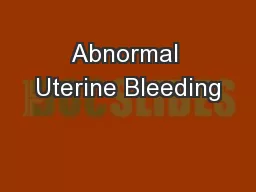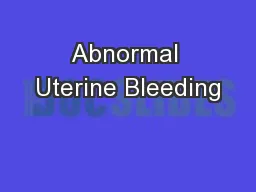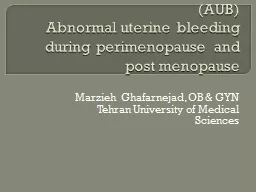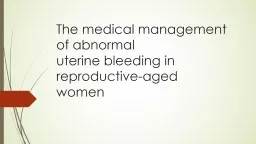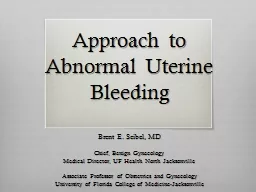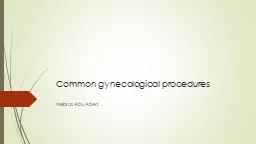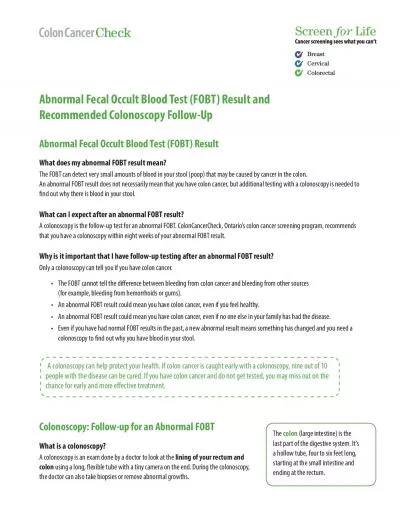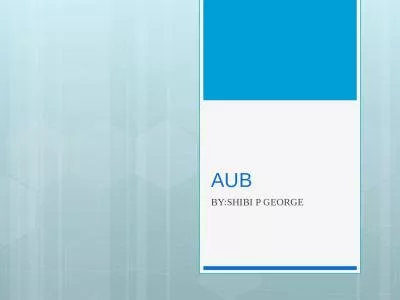PPT-Approach to Abnormal Uterine Bleeding in
Author : myesha-ticknor | Published Date : 2020-04-03
G eneral Practice Dr Lubna Qayam Outline Causes Approach Management Scenario 1 A 32 year old lady P2 co spotting in between her periods post coital bleeding with
Presentation Embed Code
Download Presentation
Download Presentation The PPT/PDF document " Approach to Abnormal Uterine Bleeding i..." is the property of its rightful owner. Permission is granted to download and print the materials on this website for personal, non-commercial use only, and to display it on your personal computer provided you do not modify the materials and that you retain all copyright notices contained in the materials. By downloading content from our website, you accept the terms of this agreement.
Approach to Abnormal Uterine Bleeding in : Transcript
Download Rules Of Document
" Approach to Abnormal Uterine Bleeding in "The content belongs to its owner. You may download and print it for personal use, without modification, and keep all copyright notices. By downloading, you agree to these terms.
Related Documents

